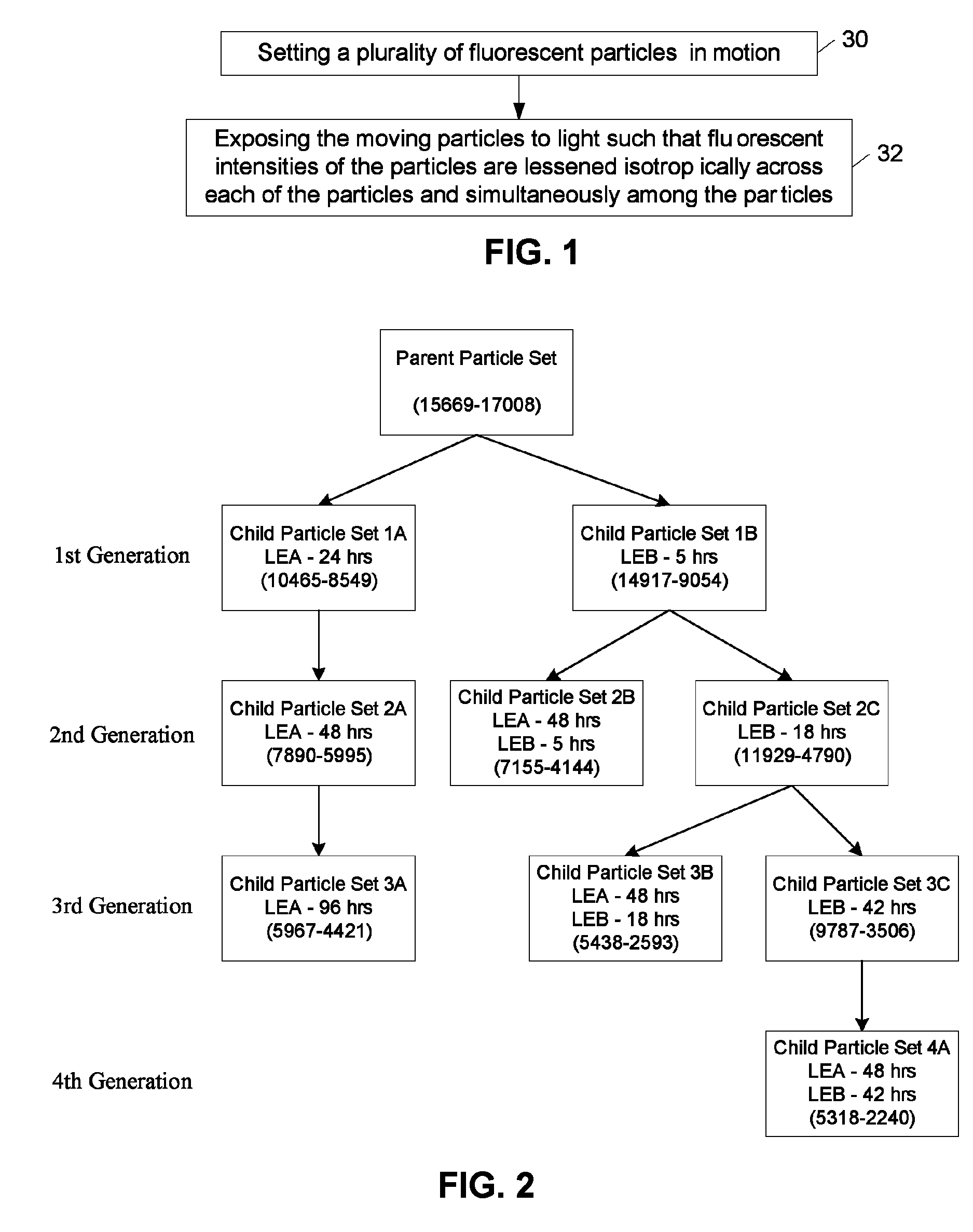Methods and systems for altering fluorescent intensities of a plurality of particles
a technology of fluorescent intensities and systems, applied in the field of methods and systems for altering fluorescent intensities of a plurality of particles, can solve the problems of increasing the cost and/or difficulty of producing the platform, adding complexity to the system, and difficult to produce particles exhibiting fluorescent intensities, so as to reduce fluorescent emissions
- Summary
- Abstract
- Description
- Claims
- Application Information
AI Technical Summary
Benefits of technology
Problems solved by technology
Method used
Image
Examples
example 1
Alteration of Fluorescence Emissions of a Plurality of Particles
[0046]Particles were each dyed with both Dye A and Dye B to form a parent particle set. In this example, 2,4-bis[2,4-dimethylpyrrole]cyclobutenediylium-1,3-dioxolate served as “Dye A” and 2,4-bis[1,1-dimethyl-2-(1-H-benz[e]indolinylidenemethyl)]cyclobutenediylium-1,3-dioxolate served as “Dye B”. Other dyes, however, may be used with the photo-bleaching process described herein. The fluorescent emissions of the particles were measured using a Luminex 100 instrument available from Luminex Corporation of Austin, Tex. The fluorescent intensities for each dye are given in units of MFI with the intensity of Dye A reported by the A channel and the intensity of dye B reported by the B channel. The parent particle set was exposed to various light conditions in order to generate different regions by selective photo-bleaching. One subset of the parent particle set was diluted to 500,000 microspheres / mL and photo-bleached using a r...
example 2
Correction of Fluorescence Emissions of a Plurality of Particles
[0051]After encoding a subset of the encoded particles, they are tested against the predefined fluorescent targets. If a set of encoded particles does not fit any of the predefined targets, the set cannot be used in combination with other sets that are targeted correctly. However, using small exposures of light, the population of particles may have their fluorescent emissions altered to be within one of the predefined spaces. In an exemplary embodiment referencing the scatter plots of FIGS. 4A-4F, exposure to a red LED moves the improperly encoded particle population down the channel B axis while exposure to a green LED moves the population diagonally down both the channel A and channel B axes. The following sequence of light exposures was used in such an example to move the particle population within a predefined space. It is noted that such a sequence of exposures is exemplary and, therefore, the methods described her...
PUM
| Property | Measurement | Unit |
|---|---|---|
| sizes | aaaaa | aaaaa |
| sizes | aaaaa | aaaaa |
| fluorescent emissions | aaaaa | aaaaa |
Abstract
Description
Claims
Application Information
 Login to View More
Login to View More - R&D
- Intellectual Property
- Life Sciences
- Materials
- Tech Scout
- Unparalleled Data Quality
- Higher Quality Content
- 60% Fewer Hallucinations
Browse by: Latest US Patents, China's latest patents, Technical Efficacy Thesaurus, Application Domain, Technology Topic, Popular Technical Reports.
© 2025 PatSnap. All rights reserved.Legal|Privacy policy|Modern Slavery Act Transparency Statement|Sitemap|About US| Contact US: help@patsnap.com



